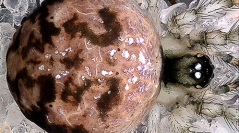

 European Journal of Taxonomy
1010 (1) - Pages 1-145
European Journal of Taxonomy
1010 (1) - Pages 1-145Taxonomy, a pivotal scientific discipline, plays a crucial role in biodiversity assessments and conservation by defining and cataloging species and higher taxa. However, tropical regions, housing a significant portion of global biodiversity, offer challenges to traditional taxonomy, leaving a substantial part of this diversity unexplored due to limited resources. This study employs a combined approach of gross morphological sorting and DNA-based species delimitation to accelerate species identification and discovery in the orb weaving spider family Theridiosomatidae (ray spiders) within Panamanian cloud forests. Using this methodology, we navigate the taxonomic challenges posed by this species-rich family, with relatively uniform sexual organs in closely related species. Employing a semi-quantitative sampling protocol, we estimate species accumulation curves and non-parametric richness, and assess various biodiversity metrics of over 3333 specimens, resulting in an integrative taxonomic revision revealing 27 new species and a new genus. Three new species of Chthonos Coddington, 1986 are described: Chthonos dobo sp. nov. (♂♀), Chthonos kaibe sp. nov. (♂♀), Chthonos kwati sp. nov. (♂♀). Seven new species of Epeirotypus O. Pickard-Cambridge, 1894 are described: Epeirotypus bule sp. nov. (♀), Epeirotypus drune sp. nov. (♀), Epeirotypus jane sp. nov. (♀), Epeirotypus kote sp. nov. (♂♀), Epeirotypus kra sp. nov. (♂♀), Epeirotypus kwakwa sp. nov. (♂♀), Epeirotypus tain sp. nov. (♀). One new species of Naatlo Coddington, 1986 is described: Naatlo chi sp. nov. (♂♀). Two new species of Ogulnius O. Pickard-Cambridge, 1882 are described: Ogulnius zbodro sp. nov. (♂♀) and Ogulnius debonaja sp. nov. (♂♀). We describe Tantra gen. nov. based on male and female characters. Eight new species are described: Tantra bribri gen. et sp. nov. (♂♀), Tantra bugle gen. et sp. nov. (♂♀), Tantra embera gen. et sp. nov. (♂♀), Tantra kuna gen. et sp. nov. (♂♀), Tantra naso gen. et sp. nov. (♂♀), Tantra ngabe gen. et sp. nov. (♂♀), Tantra sichid gen. et sp. nov. (♀), and Tantra wounaan gen. et sp. nov. (♂♀). Tantra kullki (Dupérré & Tapia, 2017) comb. nov. is transferred from Theridiosoma O. Pickard-Cambridge, 1879. Six new species of Baalzebub Coddington, 1986 are described: Baalzebub absoguedi sp. nov. (♀), Baalzebub antomia sp. nov. (♂), Baalzebub innatuledi sp. nov. (♂♀), Baalzebub jaibana sp. nov. (♂♀), Baalzebub nele sp. nov. (♀), Baalzebub sukia sp. nov. (♂♀). The male of Baalzebub albonotatus (Petrunkevitch, 1930) and Theridiosoma goodnightorum Archer, 1953 are described for the first time. Redescriptions and illustrations of Epilineutes globosus (O. Pickard-Cambridge, 1896), Naatlo fauna (Simon, 1897), and Wendilgarda clara Keyserling, 1886 are provided. Notably, we find that gross morphology remains a reliable tool for rapid species sorting, while crude or genetic identification methods offer consistent estimates for alpha diversity. The prevalence of endemic species at mid and high elevations further underscores the importance of our findings.
Symphytognathoids, Neotropical Region, integrative taxonomy, DNA barcoding, Tantra gen nov.